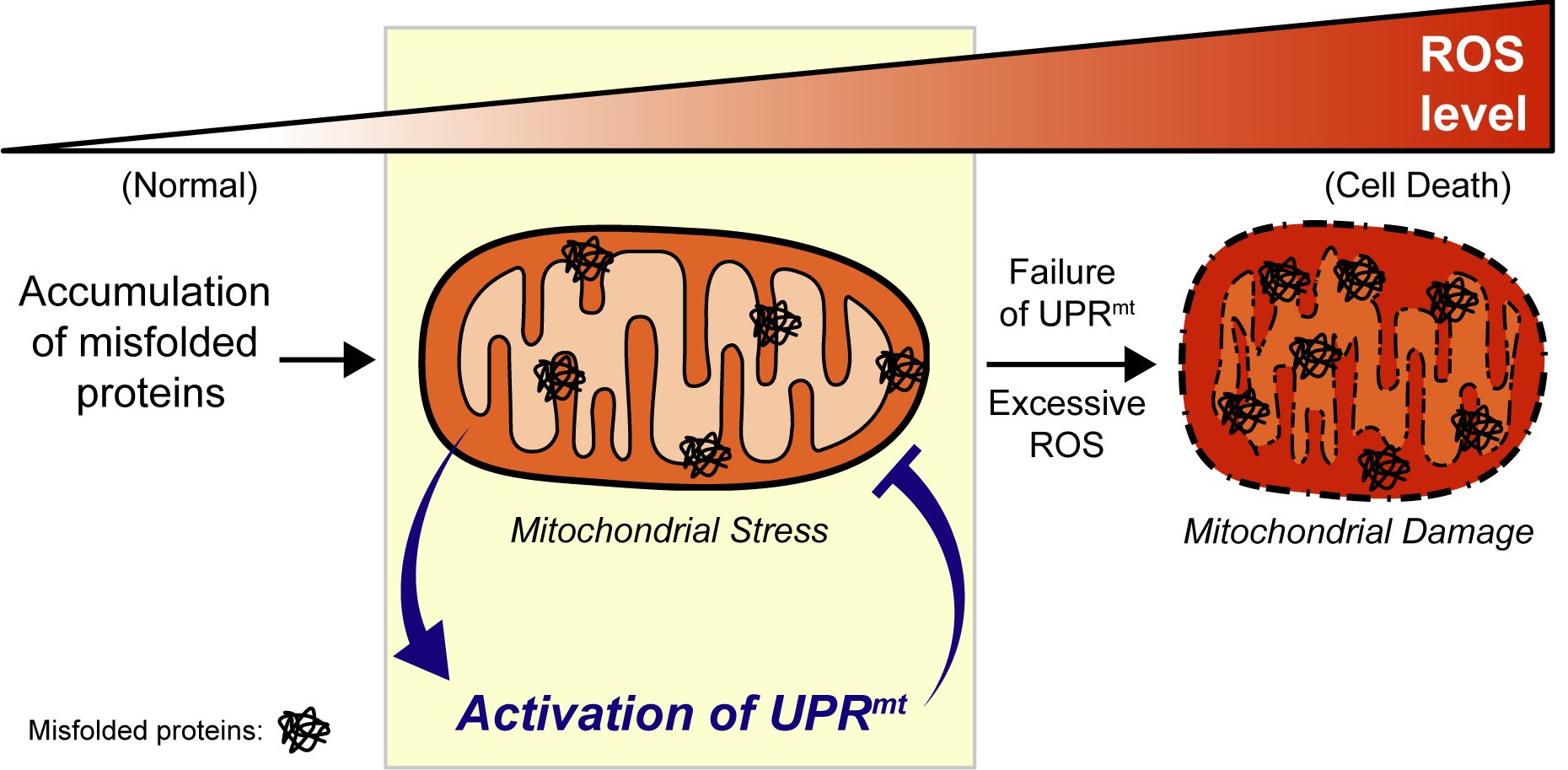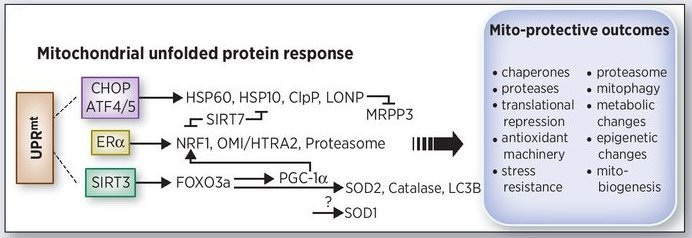An area of interest in our laboratory is to understand the role of the mitochondrial heterogeneity in breast cancer progression. Cancer cells are characterized by mutations in both the nuclear and mitochondrial genomes as well as by an oxidative environment. Both of these events can lead to misfolding of proteins and result in proteotoxic stress. While accumulation of misfolded proteins in the cytoplasm can be directly limited by the activity of the 26S proteasome, the presence of misfolded proteins within the lumen of organelles represents an additional challenge. The unfolded protein response (UPR) was first described as the result of accumulation of misfolded proteins in the lumen of the endoplasmic reticulum (UPRER). More recently however, activation of a distinct UPR in response to the accumulation of misfolded proteins in the lumen of the mitochondria (UPRmt) has begun to be appreciated. While advances in the molecular characterization of the UPRmt have been made in C. elegans in the context of its role in the control of longevity. Our laboratory however focuses specifically on the role of the UPRmt to maintain the integrity of the mitochondrial network in face of oxidative stress during oncogenic transformation in mammalian cells.
We have identified the mitochondrial sirtuin, SIRT3 and the estrogen receptor alpha (ERa) as key players of the UPRmt. Overall, the picture that emerges is that the UPRmt represents a multi-layers response coordinating an array of “mito-protective” outcomes. Given the critical importance of the metabolic reprogramming of the mitochondria in cancer cells, the study of the UPRmt is rapidly gaining more attention. In addition to its growing importance in cancer biology, we recently have obtained evidence that the UPRmt may also play a critical role in the protection against neurodegenerative diseases such as ALS.
In the future, we will continue to explore the role of the UPRmt in both breast cancer progression and ALS using an array of mouse models of these diseases. Further, since both SIRT3 and estrogen are associated with longevity, we have a kin interest in understanding the link between aging and the increased risk of developing these diseases.
Click here for a video of the dynamic mitochondrial network.
Above: frames from video link, mitochondria fusion/fission.


